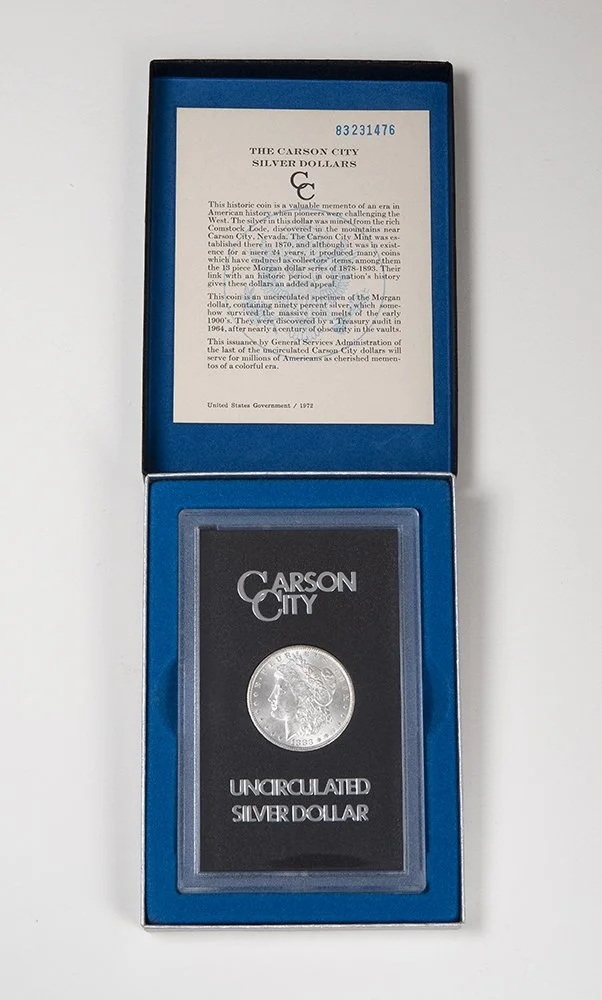The Sunday Edit: The Coin Edition
Happy New Year! In our industry, we prefer to embrace the adage "Everything old is new again," instead of "Out with the old and in with the new." On that note, let's talk old school currency.
Like most collectibles, tastes and trends change over the course of years and decades. This holds true for coin collecting as well. What was highly sought after and thought to be rare in the 1980s may not necessarily be the case, almost 40 years later. With the onset of the internet, coin buyers are no longer limited to shopping at their local mom-and-pop coin shops. Buyers now have the luxury to browse worldwide markets for the exact coin and condition they are seeking and can compare different examples and prices offered by dealers, all with a few keyboard strokes.
FinestKnown.com
One coin series which has gotten a great deal of attention over the past couple of years is the United States Morgan Dollar (1878-1904 & 1921) series. These coins were originally struck for commerce starting in 1878 until 1904, and again in 1921. The Morgan Dollars were large silver coins, consisting of 90% silver purity and containing over 77% of a full troy ounce of silver. Hundreds of millions of these Morgan Dollar coins were minted for commerce over the decades, many of which were hoarded in vaults by banks in their original canvas bags holding 1,000 coins per bag.
Throughout history, silver had many historic “run-ups” in price which led individuals, investors, and institutions to cash in and melt their silver for record profits. During 1918, the United States Congress authorized the Pittman Act which allowed the conversion (melting) of silver dollars into bar format for overseas trade. It is estimated that over 270 million Morgan Dollars were melted and turned back into large bullion bars at this time. During the great silver surge of the 1980s, individuals were melting every spare silver dollar and sterling fork in sight to cash in on the price surge. Since so many Morgan Dollars were melted throughout history, it is no surprise that coin collectors have gravitated toward preserving the very best examples of the Morgan Dollar, which have survived the many great silver rushes.
Up until a few years ago many individuals (mainly younger generations) had no idea what a Morgan Dollar was, let alone a silver dollar in general. Thanks to the United States Mint, these historic silver dollars were restruck for collectors and enthusiasts starting in 2021, breathing fresh life into the overlooked and forgotten hobby of coin collecting. The “new” Morgan Dollars were issued bearing original branch mint mark locations of San Francisco, New Orleans, Denver, Philadelphia and collector’s favorite, Carson City. Collectors were clamoring at the opportunity to own the “new” silver dollars, leading to the repeated crash of the United States Mint website upon its launch. The “new” Morgan Dollar frenzy has now spilled over into the original series with prices climbing dramatically for “key-date,” “semi-key date,” and choice “mint state” examples. It is safe to say the release of the new Morgan Dollars led collectors back to the iconic original series, driving up prices for certified examples across the board. Collectors seeking to complete the elusive 95-coin Morgan Dollar set, which includes all dates and mint marks will have no easy, or cheap task ahead of themselves!
In today’s current market, non-certified “common” date Morgan Dollar coins typically sell anywhere from $25-$40, in well circulated condition. These are examples where tens of millions of Morgan Dollars were minted (and survived) during a particular year and mint location. “Semi-key” and “key-date” Morgan Dollars usually have much lower mintages and have lower known survival rates. Some collector favorite “key-dates” include the 1893-S (regarded as the king of Morgan Dollars), 1889-CC (regarded as the King of Carson City Morgan Dollars), 1894-P and 1903-O, just to name a few. These “key-date” coins can start anywhere from $500 to $2,500 per coin in well circulated condition. When buying a sought after “semi or key date” Morgan Dollar, one should exercise caution and look for certified examples, graded by a non-biased third-party grading company like NGC Grading or PCGS grading. These coins can be verified online at their websites and sometimes even come with high-definition imaging to match the coin! The non-biased, third-party grading companies help collectors navigate the complex secondary market, making for a more transparent collecting community for everyone! If you are looking to start your Morgan Dollar collection, sell your collection or looking for advice, give The Magnusson Group a call.
-Authored by Jack Daly, Gallery Director
Know. Like. Trust.





